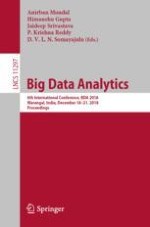2018 | OriginalPaper | Chapter
PRISMO: Priority Based Spam Detection Using Multi Optimization
Authors : Mohit Agrawal, R. Leela Velusamy
Published in: Big Data Analytics
Publisher: Springer International Publishing
Activate our intelligent search to find suitable subject content or patents.
Select sections of text to find matching patents with Artificial Intelligence. powered by
Select sections of text to find additional relevant content using AI-assisted search. powered by
